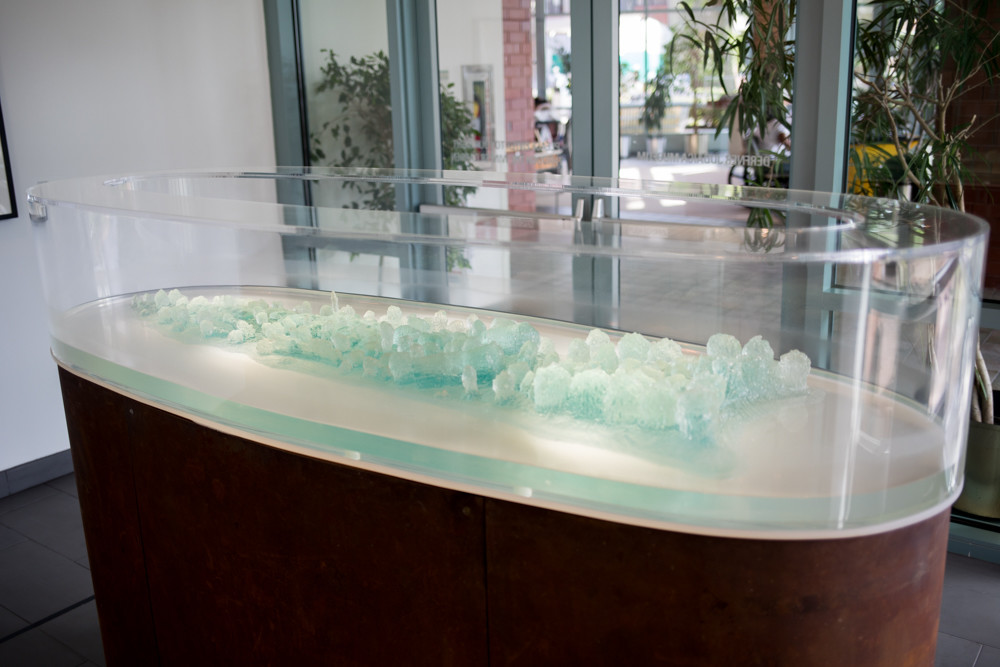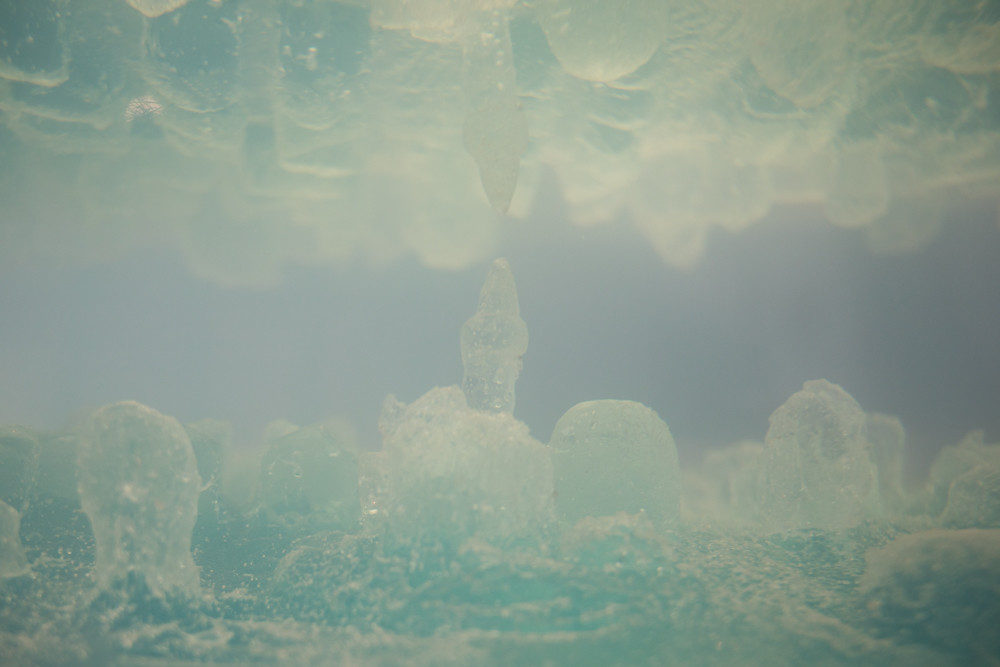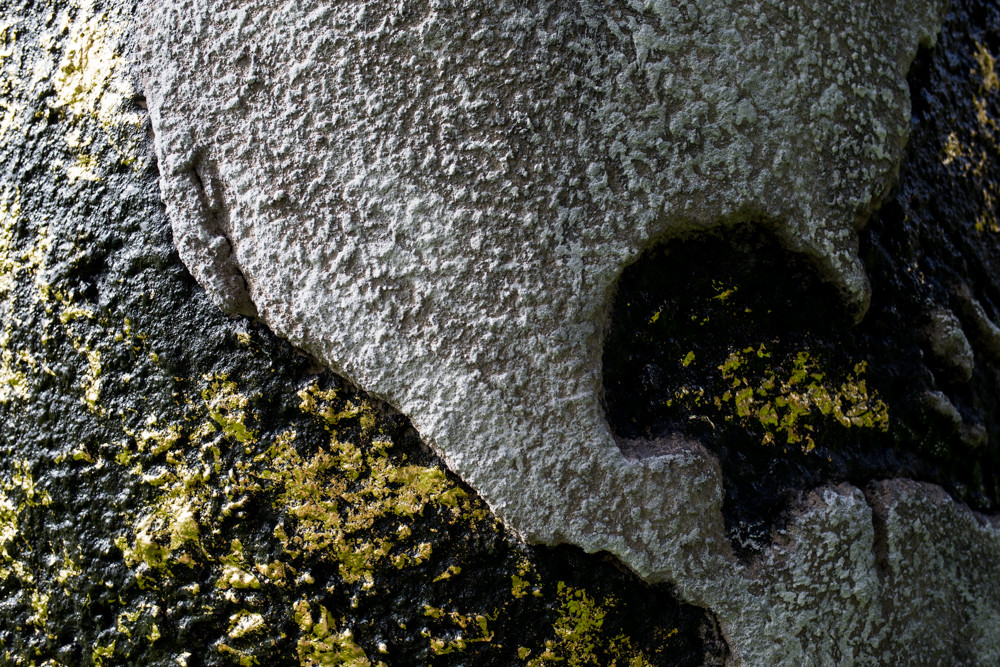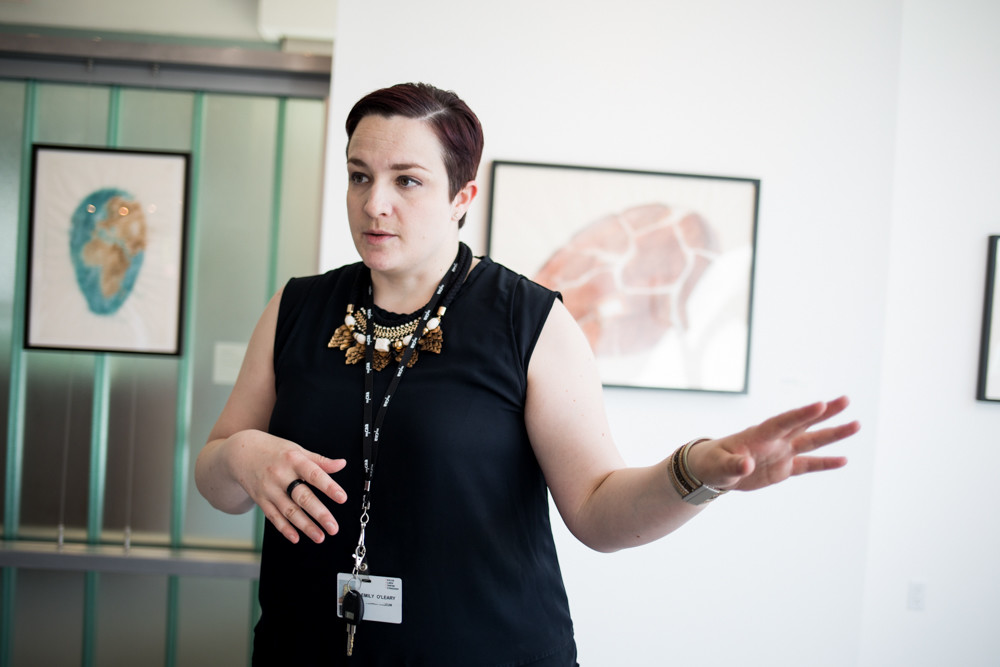An artist ruminates on earth in the balance
At the Derfner, Leonard Ursachi’s exhibit contemplates environment, culture and history
Every 15 minutes, an island sinks like Atlantis into water — all within the confines of the Derfner Judaica Museum + The Art Collection at the Hebrew Home at Riverdale.
The island in question is a replica of Ada Kaleh, a Romanian destination that existed until dictator Nicolae Ceausescu submerged it, making way for a hydroelectric dam in 1970.
The memory of the island is still fresh in artist Leonard Ursachi’s mind after a family visit there in 1968. Ursachi — who escaped communist Romania in 1978 by swimming near the sunken island to reach what was then Yugoslavia — reflects on this and other themes of destruction involving the environment, human culture and history in his exhibit, “Erosion: Works by Leonard Ursachi.”
A mix of Ursachi’s multimedia work is on display at the Derfner Judaica Museum through Jan. 6.
The replica of Ada Kaleh, known as “Rise and Shine,” is a showstopper for visitors, residents at the Hebrew Home, and even staff members, associate curator Emily O’Leary says.
“I just love the fact that it just brings people into the art,” she said. “It’s not static, it doesn’t just sit there. People notice it, and they want to know more about it.”
It’s also a way to express ideas of getting involved with causes like saving the environment.
“I like that idea that no matter who’s watching, it cycles,” O’Leary said. “And in order to stop the automatic cycle, that means that you have to intervene, or whatever that means as a witness.”
But before visitors stumble upon “Rise and Shine,” many of them also are attracted to “What a Wonderful World,” the outdoor sculpture that sits right outside of the Derfner Judaica Museum. The egg-shaped work is 9 feet high, has the world map on it, and is made out of materials like Styrofoam and 23-karat gold leaf in order to convey a message of “wealth-driven disregard for the environment,” O’Leary said.
Ursachi approached O’Leary about his idea for this exhibition last year in what O’Leary said was a “happy coincidence” as the museum planned to team up with Wave Hill as it presented its “Ecological Consciousness: Artist as Instigator” exhibition this summer.
In that time, O’Leary had a chance to visit Ursachi three different times at his Brooklyn studio. Watching him work was a learning experience for O’Leary, as she usually doesn’t work with sculptures at the museum.
“It was really fascinating because the process is so tactile,” she said. “And for him, his materials are really diverse and a big part of his work.”
Overall, O’Leary sees Ursachi’s pieces as something that can be interpreted in multiple ways.
“It allows you to decide for yourself,” she said. “It’s not intended to be didactic or a direct activist piece in that way.”
As the museum gears up for a reception and artist talk on Oct. 7, O’Leary wants the major takeaway from this show to err on the positive side.
“I hope that people do take away optimism,” she said. “There’s a lot of tumult in the world right now, and we’re at this time when people are getting more directly involved in many things, not just politics.
“And I hope a show like this brings to the fore, ‘Yes, these things are happening, or have happened.’ And going forward, we’re keeping that in mind.”

















